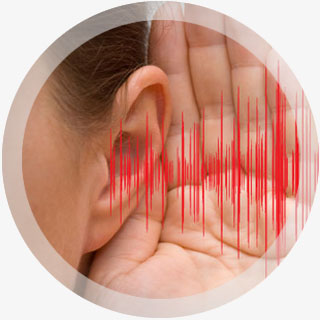How Do We Hear?
Hearing is one of our most important senses because it is the main means by which we socialise with others. Our hearing permits us to hear the quiet rustle of leaves in the wind or experience the roaring of thunder.
The ear has four main parts that sound must travel through for us to hear: the outer ear, the middle ear, the inner ear, and beyond the inner ear called retro-cochlear that includes the VIIIth nerve and the brain.
The Outer Ear
1. Pinna 2. Auditory Canal 3. Eardrum
The outer ear consists of pinna or auricle, the external auditory canal and the ear drum (tympanic membrane). The outer ear directs sound into the ear canal and carries it to the eardrum. When these sound vibrations reach the eardrum, the eardrum begins to vibrate.
The Middle Ear
1. Eardrum 2. Maleus 3. Incus 4.Staples
The middle ear contains the three smallest bones in the body; the malleus, incus and stapes. These bones conduct sound through the air filled middle ear and transfer the sound to the inner ear. These bones are known as the “ossicles” and are connected to form the “ossicular chain”.
The last bone in the chain is pushed in and out of the oval window of the cochlea. The eustachian tube, which equalizes pressure between the ear and the environment, is also found in the middle ear.
The Inner Ear
1. Cochlea2. Auditory Nerve
The inner ear, the end organ of hearing, contains both the cochlea and the vestibular system that works to keep the body balanced (your equilibrium). The snail-shaped cochlea contains what are called “hair cells” that are not really hairs, but microscopic cells that connect to approximately 24,000 nerve fibers which are essential for hearing.
The rocking motion of the stapes in the oval window moves fluid within the cochlea causing a “shearing” action or movement of the hair cells. This shearing action causes the hair cells to send an electrical impulse to the auditory nerve.

BOOK A CONSULTATION